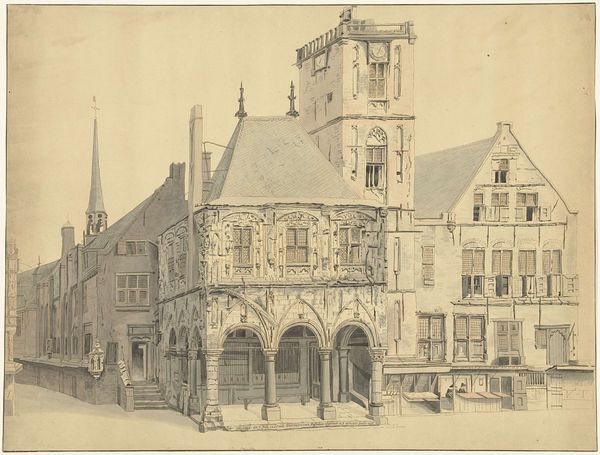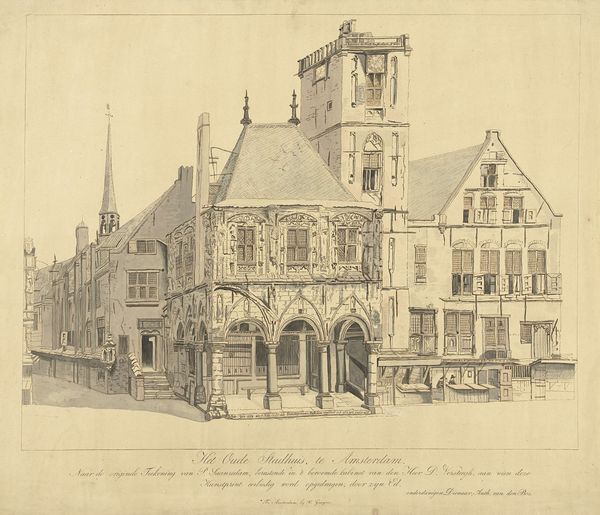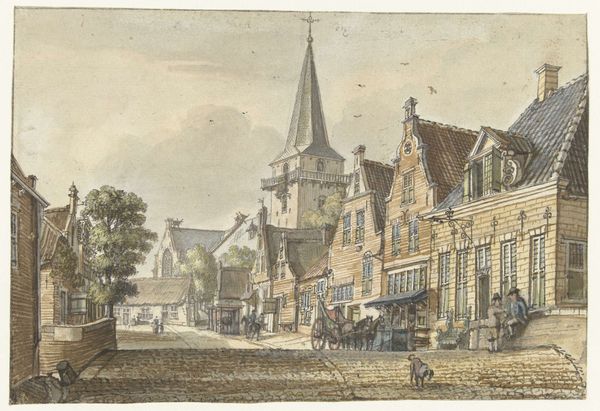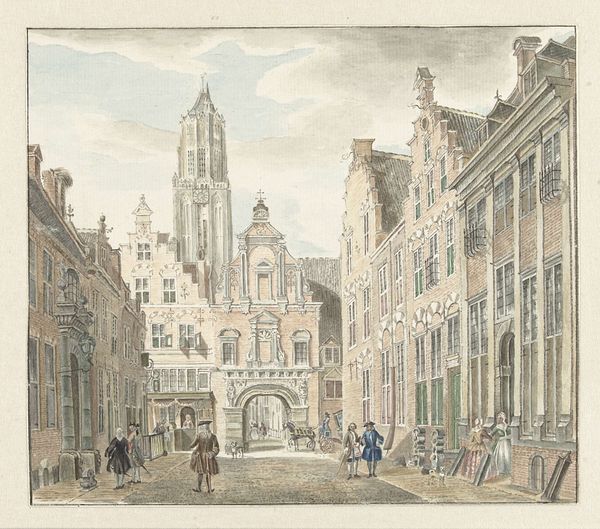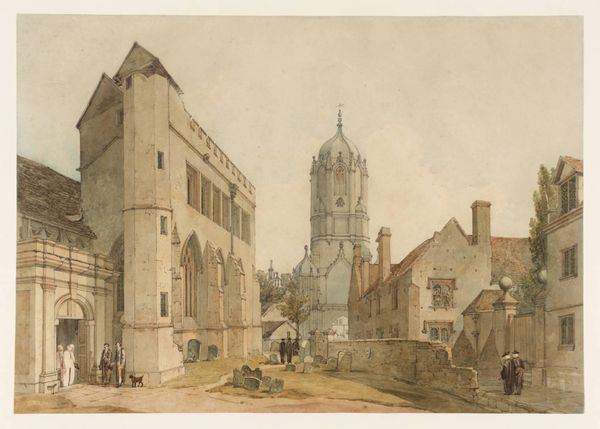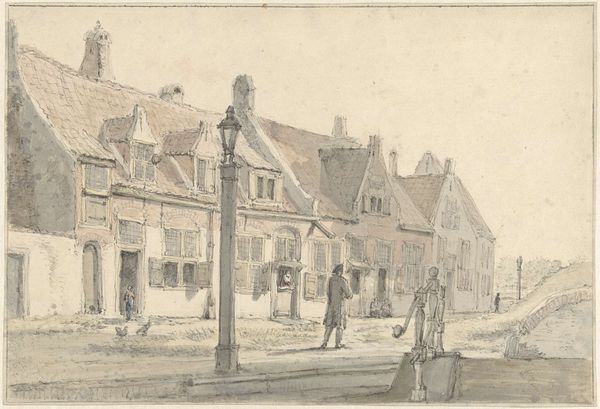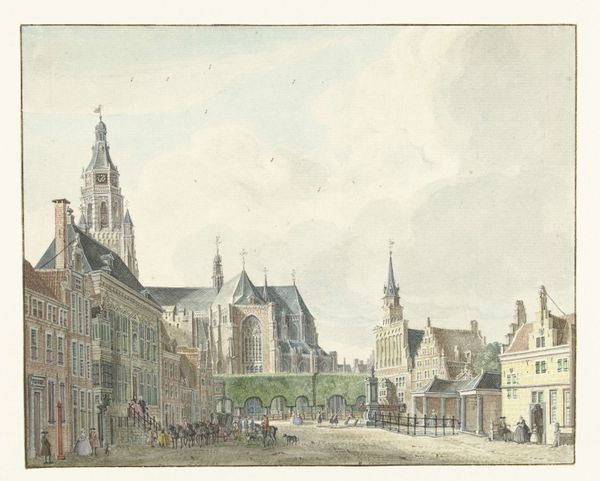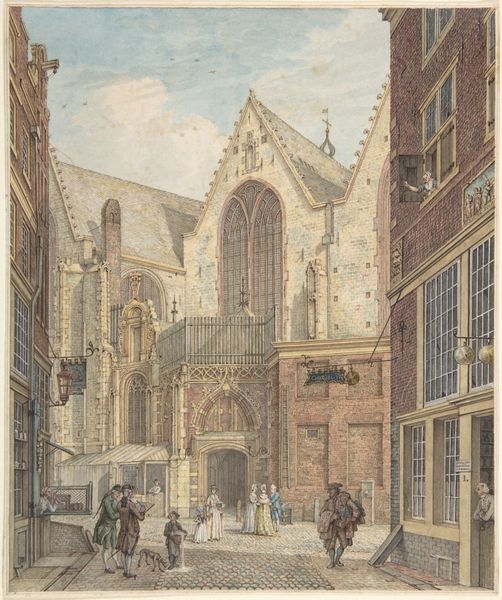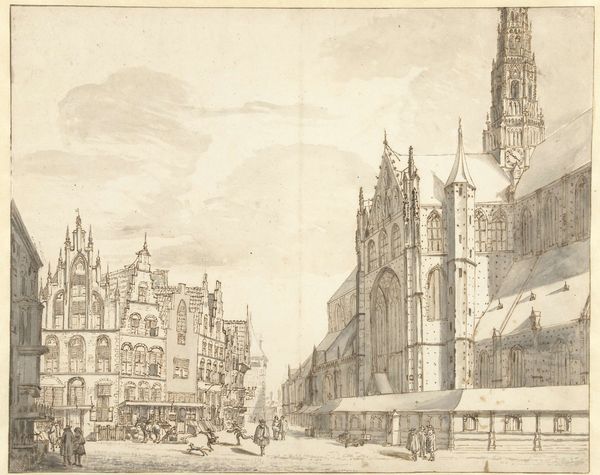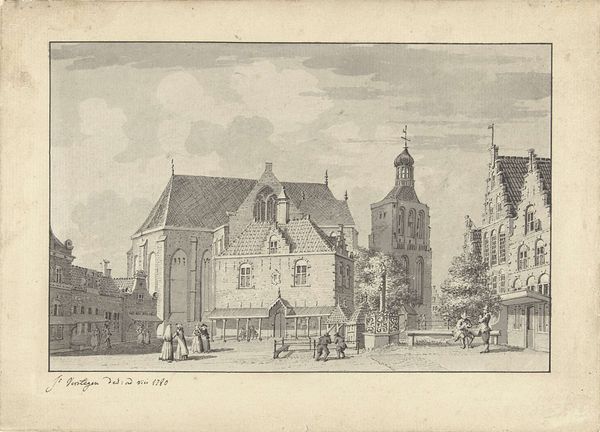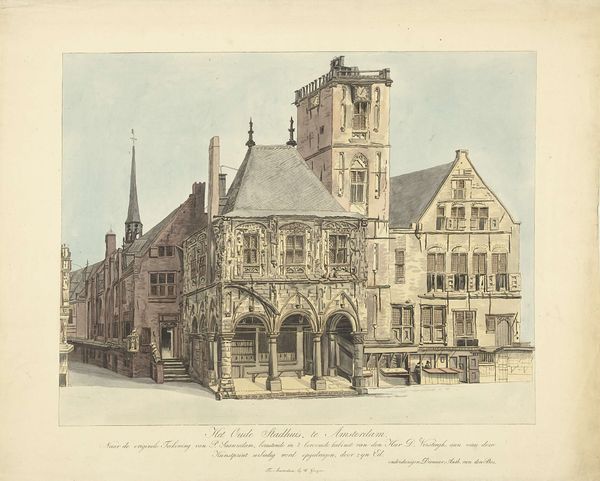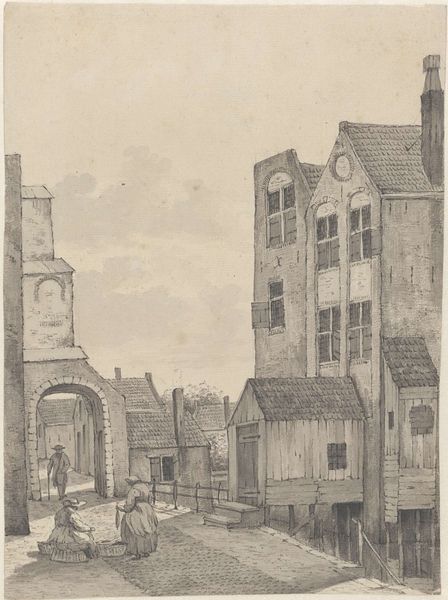
drawing, watercolor, pencil, architecture
#
drawing
#
neoclacissism
#
perspective
#
watercolor
#
coloured pencil
#
pencil
#
architecture drawing
#
cityscape
#
academic-art
#
watercolor
#
architecture
Dimensions: height 332 mm, width 427 mm
Copyright: Rijks Museum: Open Domain
Editor: This lovely watercolor and pencil drawing from 1791, by Jacobus Buys, depicts Het oude stadhuis te Amsterdam. I find the architecture quite imposing, almost a commentary on civic power, but what truly strikes me is the understated color palette and what it conveys. How do you interpret this work? Curator: That's an astute observation! The subdued palette, while aesthetically pleasing, also speaks volumes about the socio-political context. Late 18th-century Neoclassicism, of which this drawing is an example, favored a certain restrained elegance, consciously distancing itself from the more flamboyant Rococo style that was associated with aristocracy and decadence. Editor: So, the choice of medium and color serves a specific historical narrative? Curator: Precisely. Consider the function of the building itself, the Old Town Hall. It's a seat of power, and the architectural representation is designed to project authority, integrity and stability, virtues that resonated deeply during a time of social and political upheaval across Europe and in the Dutch Republic. Does it remind you of other artwork from this period? Editor: It does, I think I have a clearer understanding of Neoclassicism now. Curator: Furthermore, the lack of dramatic embellishment underscores the shift towards Enlightenment ideals. Neoclassicism, with its emphasis on order and reason, was not simply an aesthetic choice but a reflection of broader philosophical currents shaping the world at that time. Thinkers believed in a separation of church and state, they wanted an end to corruption in governments, and equal rights among citizens. Editor: That’s interesting because at first glance I would have missed the connection to philosophy. Thanks! Curator: The beauty of art history lies in unearthing those hidden connections. We peel back the layers to understand how an image or a work reflects its place and time and it continues to have relevancy to present day ideals.
Comments
No comments
Be the first to comment and join the conversation on the ultimate creative platform.
